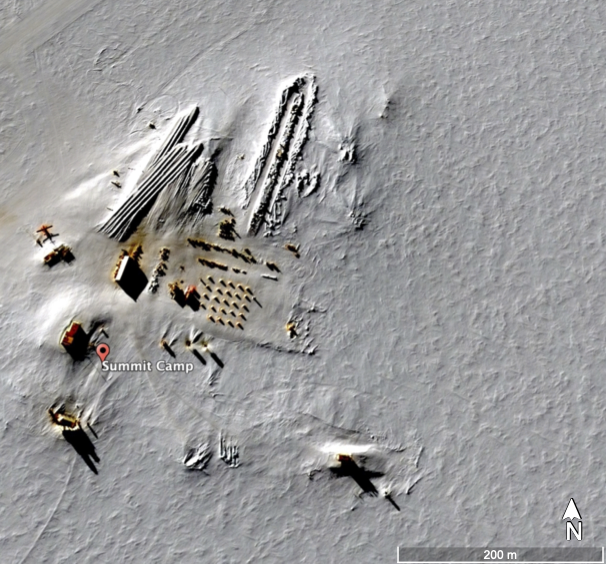InSitu
Investigating the Rate of Potential Biological in Situ Gas Production of CO and CH4 in Arctic Ice (InSitu)
Faculty Advisor/PI: Nathan J. Chellman (DRI, PI); Prof. Christopher E. Carr (Co-PI, Georgia Tech)
Date: March 2022 - Feb 2025
Current Status: Completed
Collaborators: Joe McConnell (DRI), Edward J. Brook (Oregon State), Rachel A. Moore (Georgia Tech)
We will (1) investigate the timing and temperature-dependent rates of potential in situ biological production of carbon monoxide (CO) and methane in Arctic ice, (2) develop records of atmospheric CO and methane spanning recent centuries that are free of in situ production artifacts, and (3) determine the roles that ice impurity concentration and microbial community structure play in situ gas production. As part of this work, a new 150 m ice core will be drilled at Summit, Greenland, and analyzed using a melter system and via nucleic acid extraction and sequencing. Potential impacts include extending our understanding of the lower temperature limit of microbial metabolism, recommending changes in how ice cores are stored, and improving estimates of historical methane levels in the atmosphere, of significance for understanding methane’s role in climate change.
Outcomes: Results from our experiments suggest that high-frequency carbon monoxide and methane anomalies are most likely not the result of biological processes occurring within the ice. Concentrations of these gases for ice samples stored at temperatures warm enough to permit biological activity, and thus respiration, were not statistically different than concentrations for control samples kept below the temperature threshold for biological activity. Furthermore, microbiological analysis of ice samples did not show significant differences in microbial populations in ice associated with observed gas anomalies relative to control samples. Exposure to sunlight, however, resulted in rapid generation of both gases, with isotopic data indicating a likely non-biological mechanism. While most photochemically generated carbon monoxide and methane would escape through porous surface snow to the atmosphere and therefore not impact the ice core record, this mechanism could explain anomalous gas data observed at lower-elevation sites with shallow impermeable layers such as melt layers. The research team is continuing to interpret recently acquired data from this project and reinterpret previous datasets in context of these new findings to develop a manuscript that will be submitted for peer-review publication.
Presentation: Chellman N, Riddell-Young B, Moore R, Carr CE, Brook EJ, McConnell JR. Assessing Potential Abiotic and Biotic Mechanisms Driving High-frequency CO and CH4 Anomalies in Arctic Ice. American Geophysical Union (AGU) Annual Meeting, December 9-13, 2024, Washington, DC (abstract C51F-0499).
Funding: Supported by NSF Collaborative award 2139293 to Chellman (DRI, lead institution) and Carr (Georgia Tech).




